Xinping Liu
Retrieving Event-related Human Brain Dynamics from Natural Sentence Reading
Mar 29, 2021
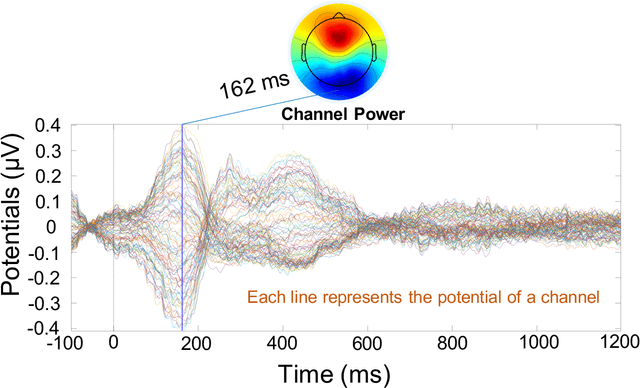
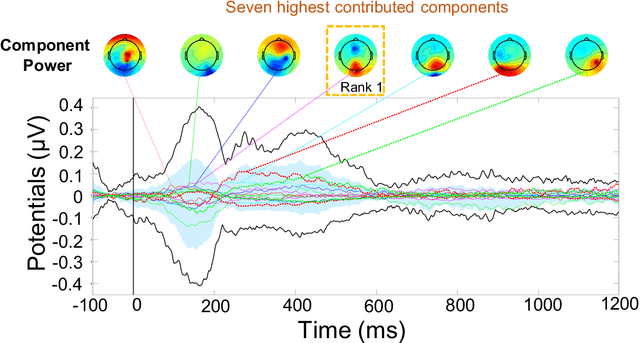
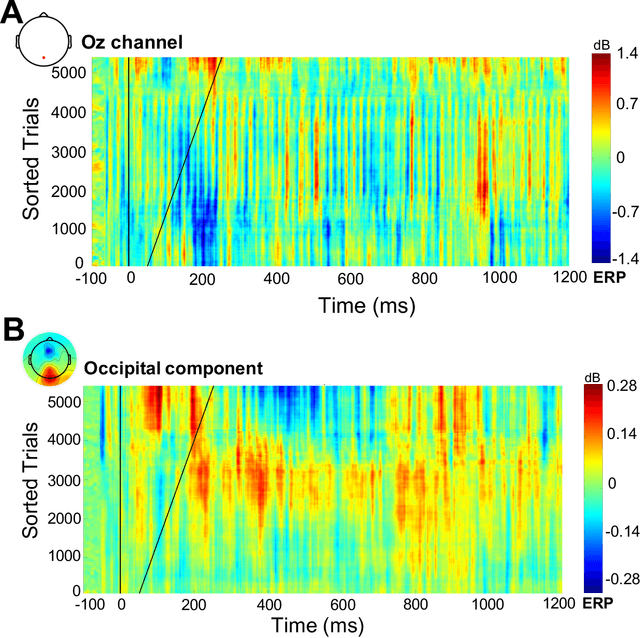
Abstract:Electroencephalography (EEG) signals recordings when people reading natural languages are commonly used as a cognitive method to interpret human language understanding in neuroscience and psycholinguistics. Previous studies have demonstrated that the human fixation and activation in word reading associated with some brain regions, but it is not clear when and how to measure the brain dynamics across time and frequency domains. In this study, we propose the first analysis of event-related brain potentials (ERPs), and event-related spectral perturbations (ERSPs) on benchmark datasets which consist of sentence-level simultaneous EEG and related eye-tracking recorded from human natural reading experiment tasks. Our results showed peaks evoked at around 162 ms after the stimulus (starting to read each sentence) in the occipital area, indicating the brain retriving lexical and semantic visual information processing approaching 200 ms from the sentence onset. Furthermore, the occipital ERP around 200ms presents negative power and positive power in short and long reaction times. In addition, the occipital ERSP around 200ms demonstrated increased high gamma and decreased low beta and low gamma power, relative to the baseline. Our results implied that most of the semantic-perception responses occurred around the 200ms in alpha, beta and gamma bands of EEG signals. Our findings also provide potential impacts on promoting cognitive natural language processing models evaluation from EEG dynamics.
CogniFNN: A Fuzzy Neural Network Framework for Cognitive Word Embedding Evaluation
Sep 24, 2020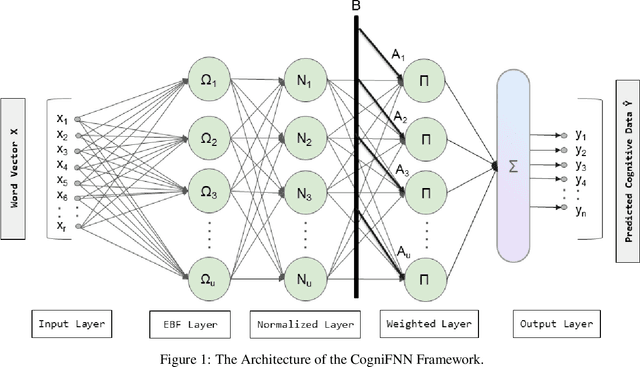
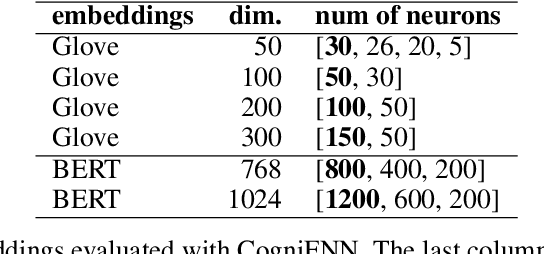
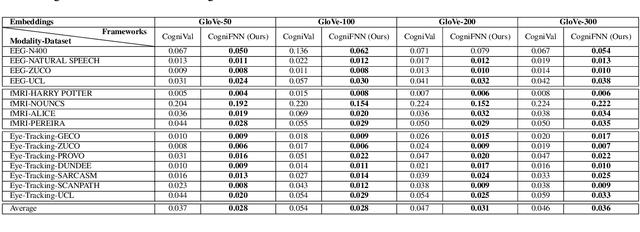
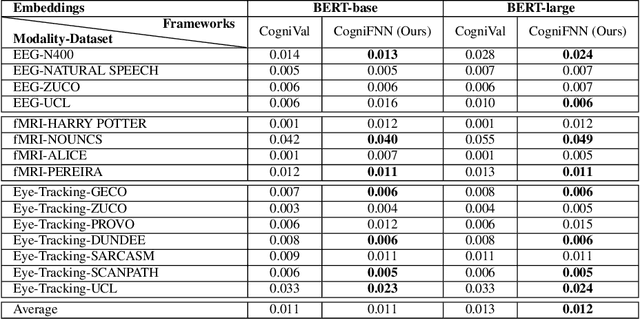
Abstract:Word embeddings can reflect the semantic representations, and the embedding qualities can be comprehensively evaluated with human natural reading-related cognitive data sources. In this paper, we proposed the CogniFNN framework, which is the first attempt at using fuzzy neural networks to extract non-linear and non-stationary characteristics for evaluations of English word embeddings against the corresponding cognitive datasets. In our experiment, we used 15 human cognitive datasets across three modalities: EEG, fMRI, and eye-tracking, and selected the mean square error and multiple hypotheses testing as metrics to evaluate our proposed CogniFNN framework. Compared to the recent pioneer framework, our proposed CogniFNN showed smaller prediction errors of both context-independent (GloVe) and context-sensitive (BERT) word embeddings, and achieved higher significant ratios with randomly generated word embeddings. Our findings suggested that the CogniFNN framework could provide a more accurate and comprehensive evaluation of cognitive word embeddings. It will potentially be beneficial to the further word embeddings evaluation on extrinsic natural language processing tasks.
 Add to Chrome
Add to Chrome Add to Firefox
Add to Firefox Add to Edge
Add to Edge